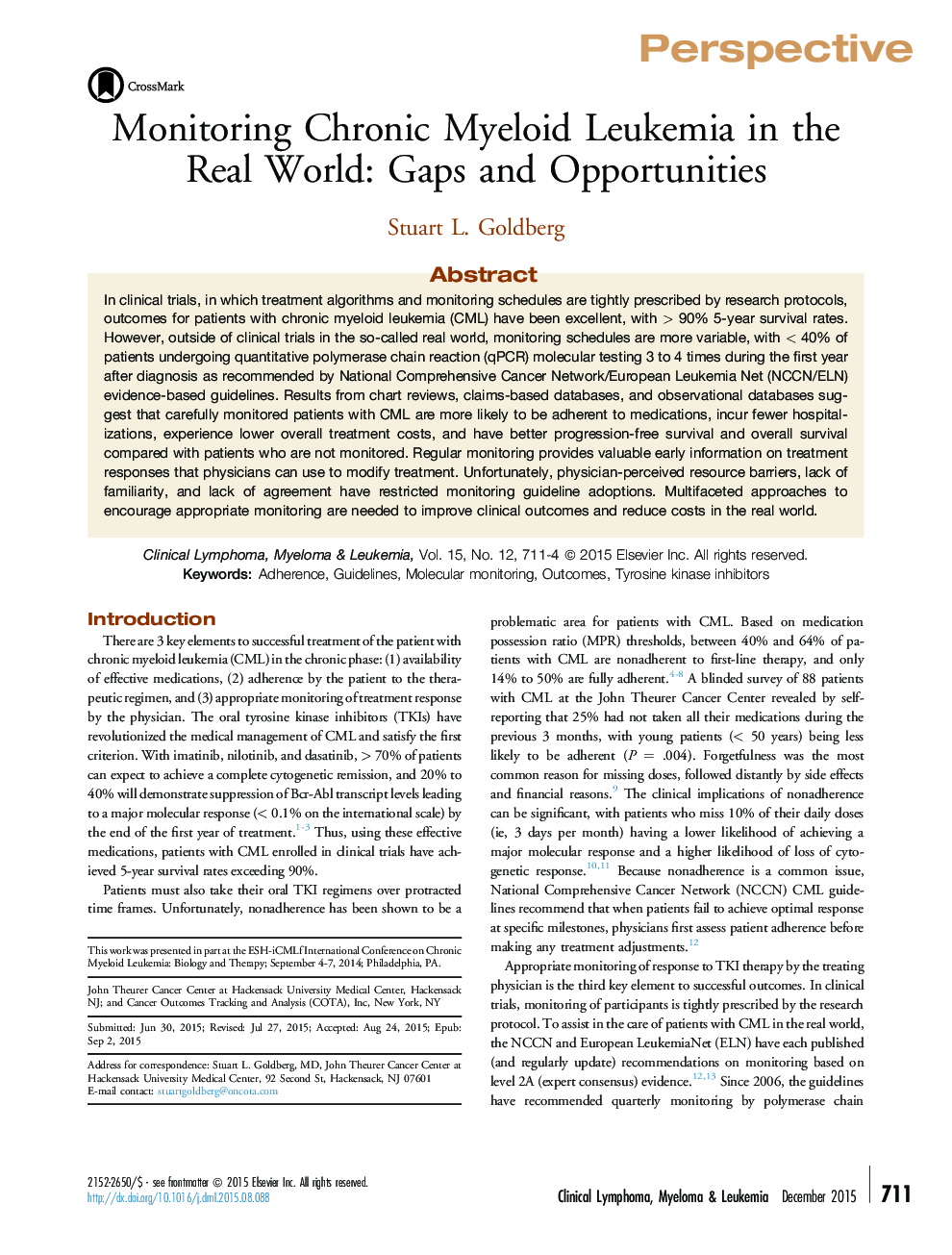| Article ID | Journal | Published Year | Pages | File Type |
|---|---|---|---|---|
| 2754303 | Clinical Lymphoma Myeloma and Leukemia | 2015 | 4 Pages |
In clinical trials, in which treatment algorithms and monitoring schedules are tightly prescribed by research protocols, outcomes for patients with chronic myeloid leukemia (CML) have been excellent, with > 90% 5-year survival rates. However, outside of clinical trials in the so-called real world, monitoring schedules are more variable, with < 40% of patients undergoing quantitative polymerase chain reaction (qPCR) molecular testing 3 to 4 times during the first year after diagnosis as recommended by National Comprehensive Cancer Network/European Leukemia Net (NCCN/ELN) evidence-based guidelines. Results from chart reviews, claims-based databases, and observational databases suggest that carefully monitored patients with CML are more likely to be adherent to medications, incur fewer hospitalizations, experience lower overall treatment costs, and have better progression-free survival and overall survival compared with patients who are not monitored. Regular monitoring provides valuable early information on treatment responses that physicians can use to modify treatment. Unfortunately, physician-perceived resource barriers, lack of familiarity, and lack of agreement have restricted monitoring guideline adoptions. Multifaceted approaches to encourage appropriate monitoring are needed to improve clinical outcomes and reduce costs in the real world.
